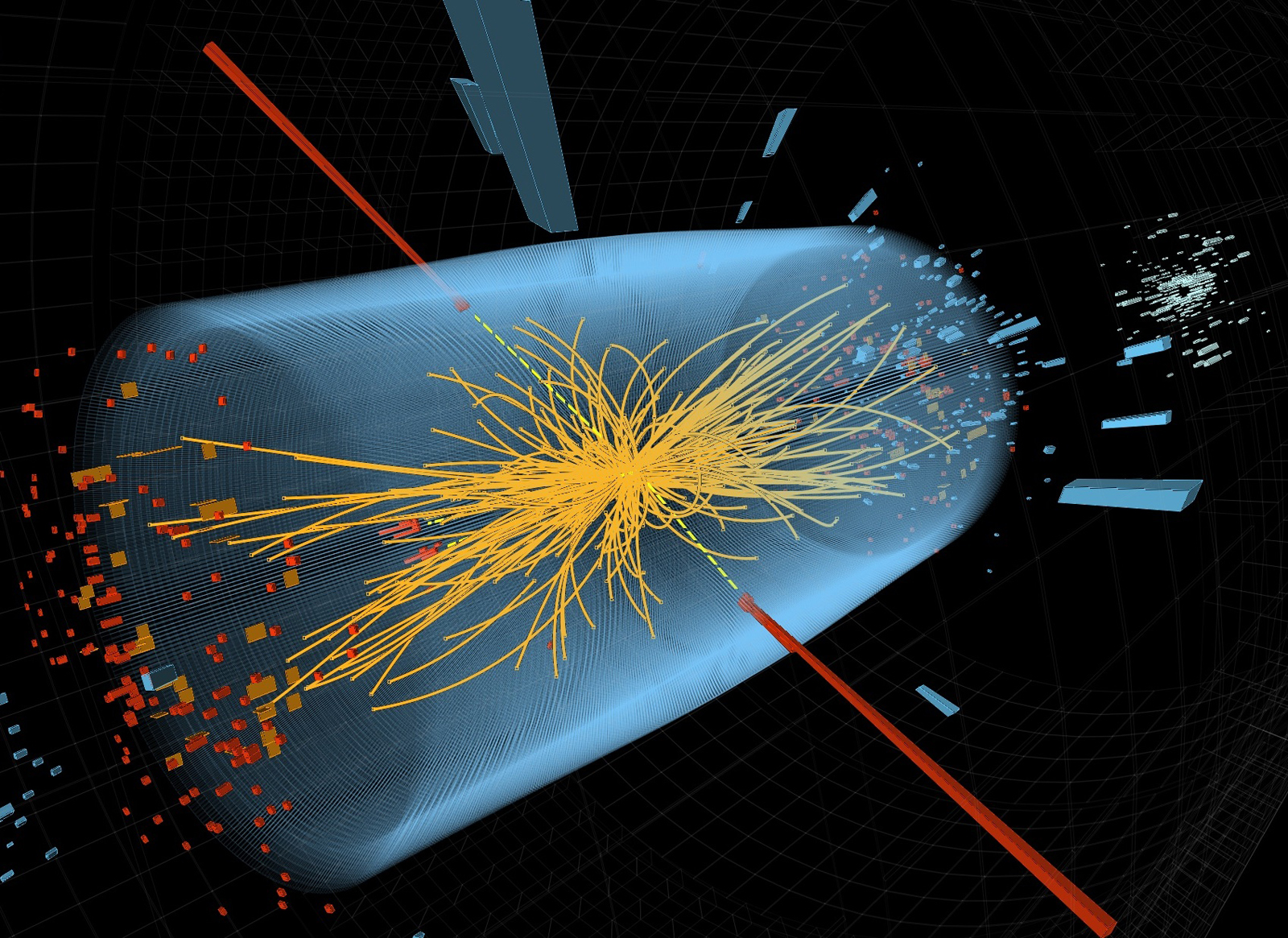Achegándonos ao LHC
O primeiro que queremos indicar é que entramos nun terreo tremendamente delicado. Se xa falar da “materia ordinaria” (a que podemos medir e controlar) implica asumir a existencia de quarks e leptóns, de mecanismos de interacción entre estas partículas mediante campos cuánticos de forza, moito máis confuso, borroso e mesmo inintelixible é cando queremos abordar o baleiro (desde a perspectiva cuántica), e a existencia das chamadas “partículas virtuais”.
Estamos nos dominios da Teoría Cuántica de Campos, e fóra da linguaxe matemática, todos os intentos de expresar con palabras correntes o que está a acontecer, e, máis aínda, con ánimo divulgativo, implica inevitablemente caer en argumentacións e aproximacións forzadas, sempre incompletas, e, ás veces, mesmo erróneas.
Hai físicos que directamente se opoñen, por exemplo, a usar a terminoloxía de “partícula virtuais”. Entenden que o mellor e ser o máis fiel a teoría cuántica de campos e non consideralas como partículas en absoluto, senón perturbacións ou excitacións nun campo determinado (como o campo electromagnético ou gravitatorio) forzada pola presenza de partículas reais ou doutros campos.
Nós preferimos seguir o criterio de manter o termo “partícula virtual” porque desde a perspectiva divulgativa presentan máis vantaxes ca inconvenientes, e somos máis coherentes cos outros subapartados deste parte do traballo.
Nun campo clásico o estado de baleiro no contén nada, está “inerte” e non presenta ondas nin flutuacións. Porén, o estado de baleiro nun campo cuántico está continuamente flutuando con excitacións que aparecen e desaparecen, “as “partículas virtuais”, cumprindo a relación de incerteza de Heisenberg para a enerxía e a duración do proceso: Δt·ΔE ≥ ℏ. É dicir, a máis enerxía, ΔE, (ou masa, Δm) desas partículas virtuais que aparecen, menos tempo, Δt, "sobreviven", desaparecendo de inmediato.

Recreación de flutuaciones cuánticas (Tomado de IFLScience)
Polo tanto, o baleiro cuántico non é un lugar no que non haxa nada, só que as partículas, as flutuacións e a enerxía que hai son tan pequenas e efémeras que, por agora, resulta imposible extraelas ou transformalas, pero a súa “existencia” é incuestionable. Son protagonistas imprescindibles nas interaccións entre partículas ordinarias, como indicamos noutro subapartado cando falamos dos diagramas de Feynman, ou no establecemento da masa das partículas a través do campo de Higgs.
Ademais, hai experimentos baseados no chamado Efecto Casimir, que mostran a presenza destas flutuacións do baleiro cuántico, e na actualidade se está a levar a cabo un experimento en Hamburgo, utilizando o maior láser de Raios X do mundo (European XEFL), co propósito de rastrear de xeito moi preciso as flutuacións cuánticas do baleiro.
Por outra parte, na cosmoloxía actual acéptase que a maior parte da densidade de enerxía no universo está nunha forma descoñecida chamada “enerxía escura”. Crese que constitúe ao redor do 70% do contido do universo (a materia escura, materia invisible cuxa gravidade tira das galaxias, constitúe o 25%, e a materia normal só o 5%). Non se coñece aínda nin a súa orixe nin a súa natureza, pero postúlase que está relacionada coas flutuacións cuánticas do baleiro, e sería a responsable da repeler gravitacionalmente toda a materia; e, polo tanto, causante da expansión acelerada que se observa no universo. De ser certo, o destino final do noso mundo estaría nas mans destas fugaces e “fantasmais” partículas virtuais.
Podemos concluír este asunto dicindo que na física clásica o baleiro é un lugar inerte, inactivo e “aburrido”, pero na física cuántica o baleiro é un lugar ben dinámico, moi concorrido, e divertido.
|
AUTORES Xabier Cid Vidal, Doctor en Física de Partículas (experimental) pola Universidad de Santiago (USC). Research Fellow in experimental Particle Physics no CERN, desde xaneiro de 2013 a decembroe de 2015. Estivo vencellado ao Depto de Física de Partículas da USC como becario "Juan de la Cierva", "Ramon y Cajal" (Spanish Postdoctoral Senior Grants), e Profesor Contratado Doutor. Desde 2023 é Profesor Titular de Universidade nese Departamento (ORCID). Ramon Cid Manzano, foi catedrático de Fïsica e Química no IES de SAR (Santiago - España), e Profesor Asociado no Departamento de Didáctica de Ciencias Experimentais da Facultade de Educación da Universidad de Santiago (España), ata o seu retiro en 2020. É licenciado en Física, licenciado en Química, e Doutor pola Universidad de Santiago (USC).(ORCID). |
CERN CERN Experimental Physics Department CERN and the Environment |
LHC |
NOTA IMPORTANTE
Toda a Bibliografía que foi consultada para esta Sección está indicada na Sección de Referencias
© Xabier Cid Vidal & Ramon Cid - rcid@lhc-closer.es | SANTIAGO |



